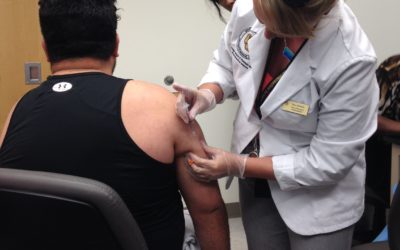Reading glasses, also referred to as “readers” or “cheaters”, are an item that millions of people don’t leave their home without, and often can be found hanging around their neck. Whether willingly embracing the change, or begrudgingly adding them to the list of essentials, the need for reading assistance is an inevitable part of life. You may find yourself asking why does this happen? What do the numbers mean? And which is best for me? In this blog, we will review all of the details to help you make an informed decision next time you find an overwhelming rack of “readers” staring back at you.
To understand why we need reading glasses, it is important to understand how our eyes work. Throughout childhood and into adulthood, our eyes allow us to effortlessly and subconsciously shift our focus from far to near. This is made possible by the crystalline lens, the same part of the eye that gets cataracts. The lens is controlled by a muscle in the eye that changes its shape depending on where our eyes are focused. Over time, the lens stiffens, progressively fixing our focus on the distance. This phenomenon is called Presbyopia, and usually affects people in their mid 40’s.
Just like a camera, our eyes need to add optical power to focus on images up close. This optical power in quantified into a unit of measure called a diopter. Diopters are the numbers displayed on reading glasses. For example, a pair of reading glasses labeled as +2.00, is 2 diopters. These numbers can be positive or negative, as seen on eyeglass prescriptions, but reading glasses will be labeled as positive numbers.
Reading glasses can be found online and most local grocery and drug stores. The most common reading prescription or power is +2.50. This is the optimal reading strength for most patients. A pair of +2.50 reading glasses is set to focus at 40 centimeters, or just over a foot, away from your eyes. As the power increases, it allows the wearer to hold things even closer. This is helpful when trying to identify especially small details such as prescription labels and drug inserts. However, the trade off with extra strong reading glasses, such as +3.00 and above, is that it requires the wearer to hold things closer than may be comfortable, and details further away will be blurry. Conversely, a lower power, like +1.50, is more useful for objects further away than where most patients would hold a book, such as desktop computer viewing and cooking. Keep in mind though, with a lower power, closer details may not appear as clear. As a general guideline:
+1.00 - +1.75: Computer use, cooking, etc.
+2.00 - +2.75: Reading
+3.00 - +3.50: Fine print, crafting, sewing etc. These general guidelines should serve as a good starting point for most people. However, they may not work for everyone. I recommend starting with the lowest power that allows you to see clearly at the distance desired. Some may be able to read with a lower number such as +1.00, rather than requiring the full power listed above. Others may need specialized prescription lenses to achieve their best vision, and eye conditions like cataracts can make everything appear blurry, even with reading glasses. If you are having difficulty with your vision, I first recommend receiving a comprehensive eye exam from an optometrist or ophthalmologist to rule out other causes of blurred vision, and ensure over the counter reading glasses are right for you.
Save up to 80% on the cost of your prescriptions at your local pharmacy with EasyDrugCard.com. Download your free drug card and begin saving today.
For more information, see the references below:
https://www.mayoclinic.org/diseases-conditions/presbyopia/symptoms-causes/syc-20363328












